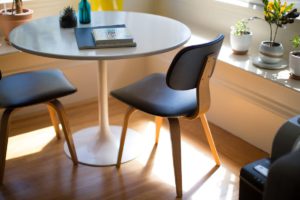Workspaces and Work-Life Harmony
In today’s rapidly changing work landscape, achieving work-life balance has become an essential aspect of our professional lives. The traditional 9-to-5 office setup is no longer the only option, as remote work and flexible schedules have gained prominence. Striking the right balance between work and personal life can be challenging, but it’s essential for our overall well-being. One strategy that has emerged as particularly effective is combining various workspaces. Here, we’ll explore why alternating between coming to the office, working from home, and utilising other workspaces can improve work-life harmony and enhance the quality of work.
Flexibility and Adaptability
One of the primary benefits of alternating between different workspaces is the flexibility and adaptability it offers. The modern workforce demands flexibility in both work hours and location. While some tasks may require the focus and structure of an office setting, others can be more efficiently completed in the comfort of one’s home or a different workspace.
For instance, tasks that require brainstorming, teamwork, or access to specialised equipment are often better suited for the office environment. On the other hand, tasks that demand deep concentration and minimal distractions may be more effectively tackled at home or in a quiet workspace like a library or a coworking centre. By alternating between these environments, individuals can optimise their work conditions, resulting in improved productivity and better work-life balance.
Reducing Commute Stress
 Commuting to the office can be one of the most significant sources of stress in an employee’s daily life. Long commutes eat up precious time and energy, leaving employees fatigued before they even begin their workday. The flexibility to work remotely or choose alternative workspaces on certain days can significantly reduce the stress associated with commuting.
Commuting to the office can be one of the most significant sources of stress in an employee’s daily life. Long commutes eat up precious time and energy, leaving employees fatigued before they even begin their workday. The flexibility to work remotely or choose alternative workspaces on certain days can significantly reduce the stress associated with commuting.
By eliminating or reducing the daily commute, employees have more time for personal activities, exercise, and relaxation. This, in turn, contributes to improved work-life harmony and a higher quality of work.
Personalised Work Environments
Not everyone thrives in the same work environment. Some people are more productive in a quiet and organised office, while others prefer the comforts of their home or the hustle and bustle of a coffee shop. Recognising and accommodating these individual preferences is essential for achieving work-life harmony.
By alternating between various workspaces, employees can create a more personalised work environment that suits their needs and enhances their productivity. This customisation can involve adjusting lighting, ergonomics, and noise levels to create an ideal workspace. For example, an employee might choose to work from a cafe with ambient noise when they need creative inspiration but opt for a quiet home office when tackling a complex analytical task. This level of personalisation can lead to better job satisfaction and improved work outcomes.
Enhancing Collaboration and Networking
While remote work has its advantages, it can sometimes lead to isolation and a lack of face-to-face interaction with colleagues. Building strong professional relationships, sharing ideas, and fostering collaboration are essential components of a healthy work environment. The office, with its social interactions and impromptu meetings, plays a crucial role in this aspect.
By periodically coming to the office, employees have the opportunity to connect with colleagues, engage in spontaneous discussions, and build a sense of camaraderie. These interactions can lead to improved teamwork, idea-sharing, and mentorship opportunities. If your office is too far from your home, you can look for a shared office space in Melbourne, which is near your home. This will help you to clear your mind and focus on your work more, as sometimes the home environment can be quite distracting. A luxury coworking space, on the other hand, can help you to meet like-minded individuals and discover new business opportunities.
Separating Work and Personal Life
One of the most significant challenges of remote work is the blurring of boundaries between work and personal life. When your home becomes your office, it can be challenging to disconnect from work and fully engage in personal activities. This lack of separation can lead to burnout and decreased work-life harmony.
Alternating between workspaces allows individuals to establish clear boundaries between work and personal life. When working from home, it’s crucial to create a dedicated workspace and set specific working hours. Similarly, when in the office or other workspaces, focus on work-related tasks and leave personal matters behind. By compartmentalising work and personal life, employees can maintain a healthier balance, reduce stress, and ultimately perform better in both domains.
As the world continues to embrace remote and flexible work arrangements, individuals and organisations alike should recognise the value of diverse workspaces. By leveraging the advantages of each environment, employees can harness their full potential, leading to increased job satisfaction, better work outcomes, and healthier work-life harmony. In this ever-evolving work landscape, the ability to adapt and find the right balance between workspaces is a valuable skill that can enhance both professional and personal lives.



